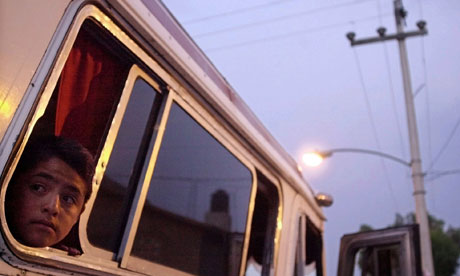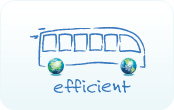|
Home  News News
Buses can curb road deaths as cities grow
|
As urban populations swell, city planners must bolster bus and other public transport systems if we are to reduce traffic accidents.
|
|

A bus arrives in Mexico City. An expansion of transit systems
have cut traffic-related injuries and fatalities in the city by 40%reports show. Photograph: AP
|
03 September 2013 - The world's cities are about to get a lot busier. Today, more than 50% of the global population lives in cities; by 2050, that figure will have risen to 75%.
More than 90% of road traffic deaths occur in middle- and low-income countries – precisely where urbanisation is accelerating most rapidly. About 1.3 million people die prematurely every year due to urban air pollution, a figure that will increase as more cars take to the road. Already, 1.2 million people die and up to 50 million are injured in traffic accidents annually. Nearly half of these incidents occur in cities.
Smart urban planning can dramatically improve traffic safety, air quality and physical activity in the world's cities and it all starts with a vision: what kind of cities do we want to live in? How much time do we want to spend commuting, or with our families and friends, or pursuing our favourite activity? Do we want to accept traffic fatalities and injuries as the norm? How important is it for us to live in a healthy environment?
|
|
Forward-thinking planners can design compact cities that have a positive impact on human health. Dense cities such as Amsterdam, New York, and Copenhagen offer residents more opportunities to take buses, the subway, cycle or walk. Because more trips can be made without a car, fewer vehicles are on the road. The more people travel by bus and public transport, the more it reduces the risk of traffic crashes and decreases greenhouse gas emissions and other types of air pollution - a safe and green move that benefits everyone.
Research from the World Resources Institute's Embarq Centre for Sustainable Transport has shown that well-designed mass transport systems are many times safer than private cars. For example, in Guadalajara, 99% of traffic accidents involve private vehicles while only 1% of crashes occur along the Macrobus Bus Rapid Transit (BRT) corridor.
Embarq is working with officials in more than 50 cities across six countries to give people better options for getting around, and improve mass transit systems. In Mexico City, for example, Embarq has supported the construction of almost 620 miles of BRT corridors, which has cut commuting times by nearly 12 million hours annually, reduced traffic-related injuries and fatalities by roughly 40%, and eliminated more than 113,000 tons of carbon dioxide emissions a year.
Many of today's booming cities are expanding, which is exacerbating urban challenges. But it need not be so. City planners must focus on smart design and safe and efficient public transport solutions such as BRT. Urban communities and the environment are depending on it.
Source
|
|














